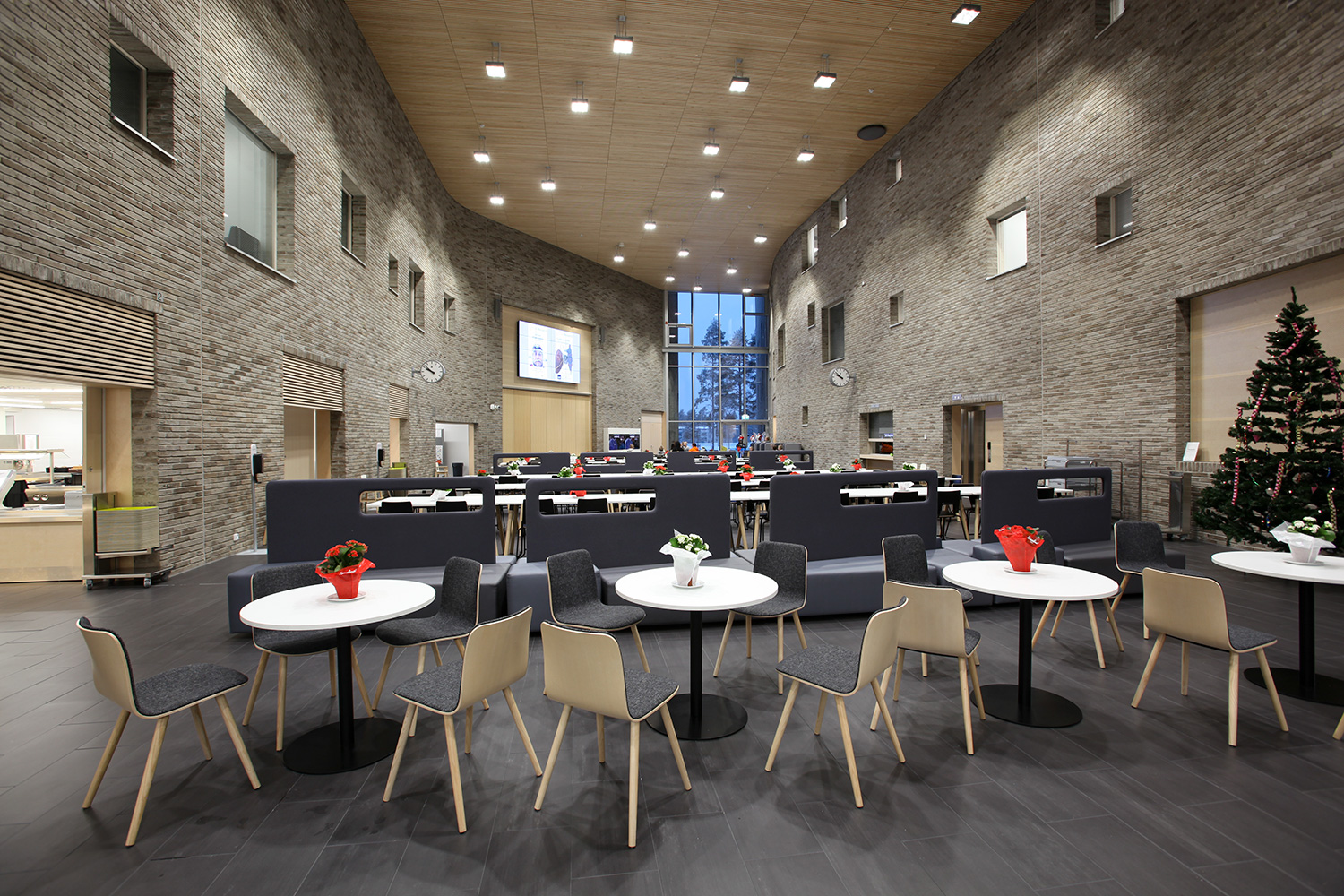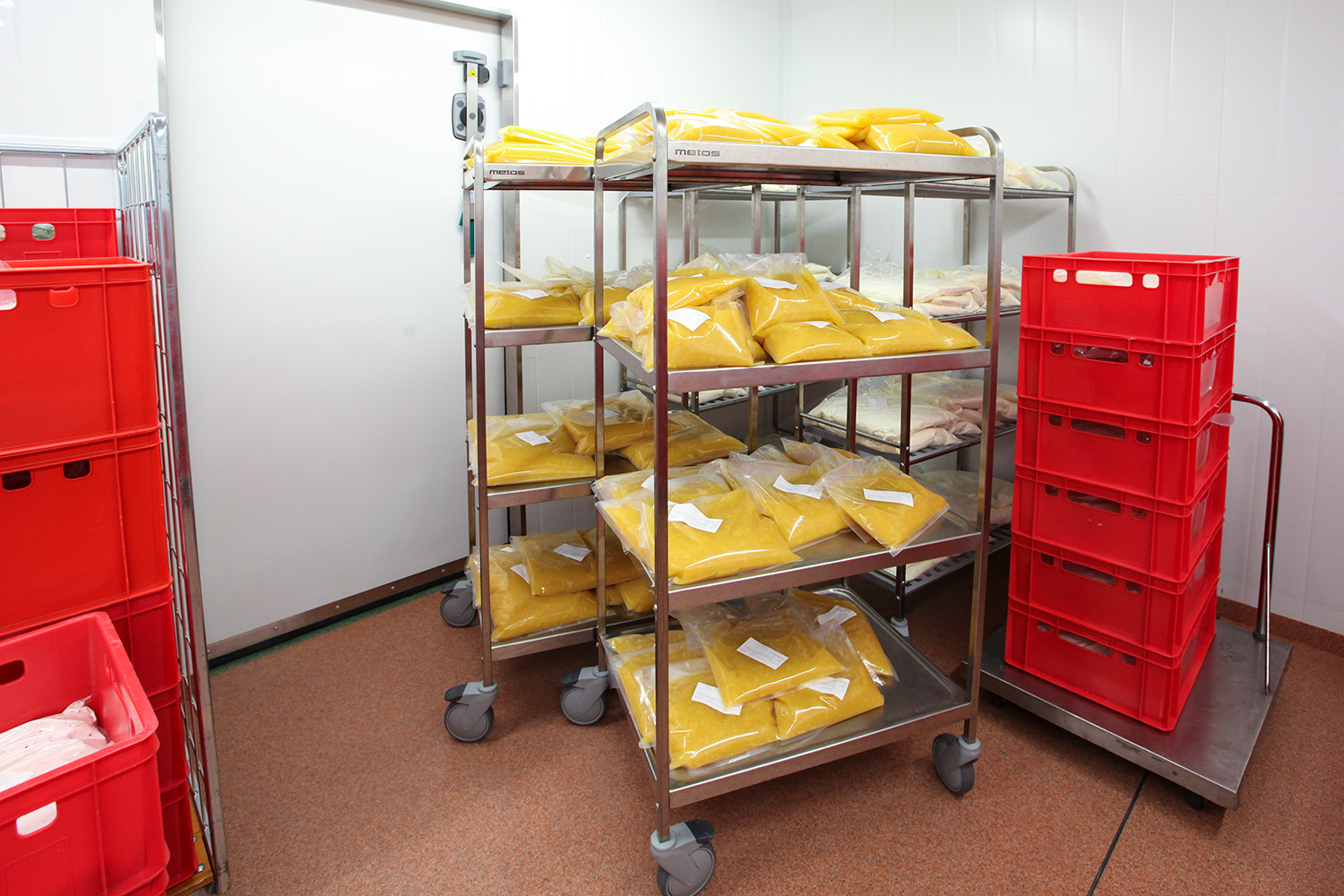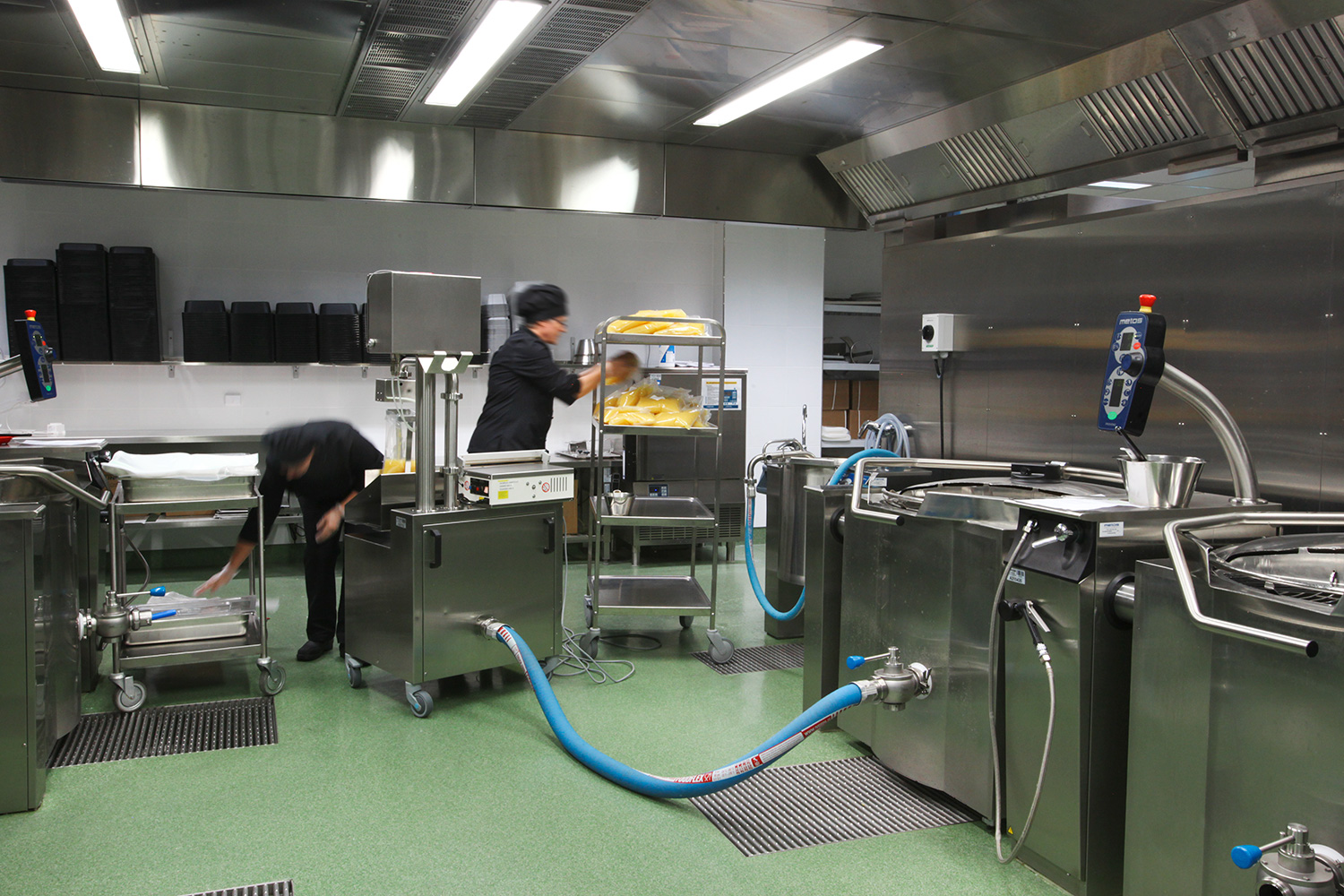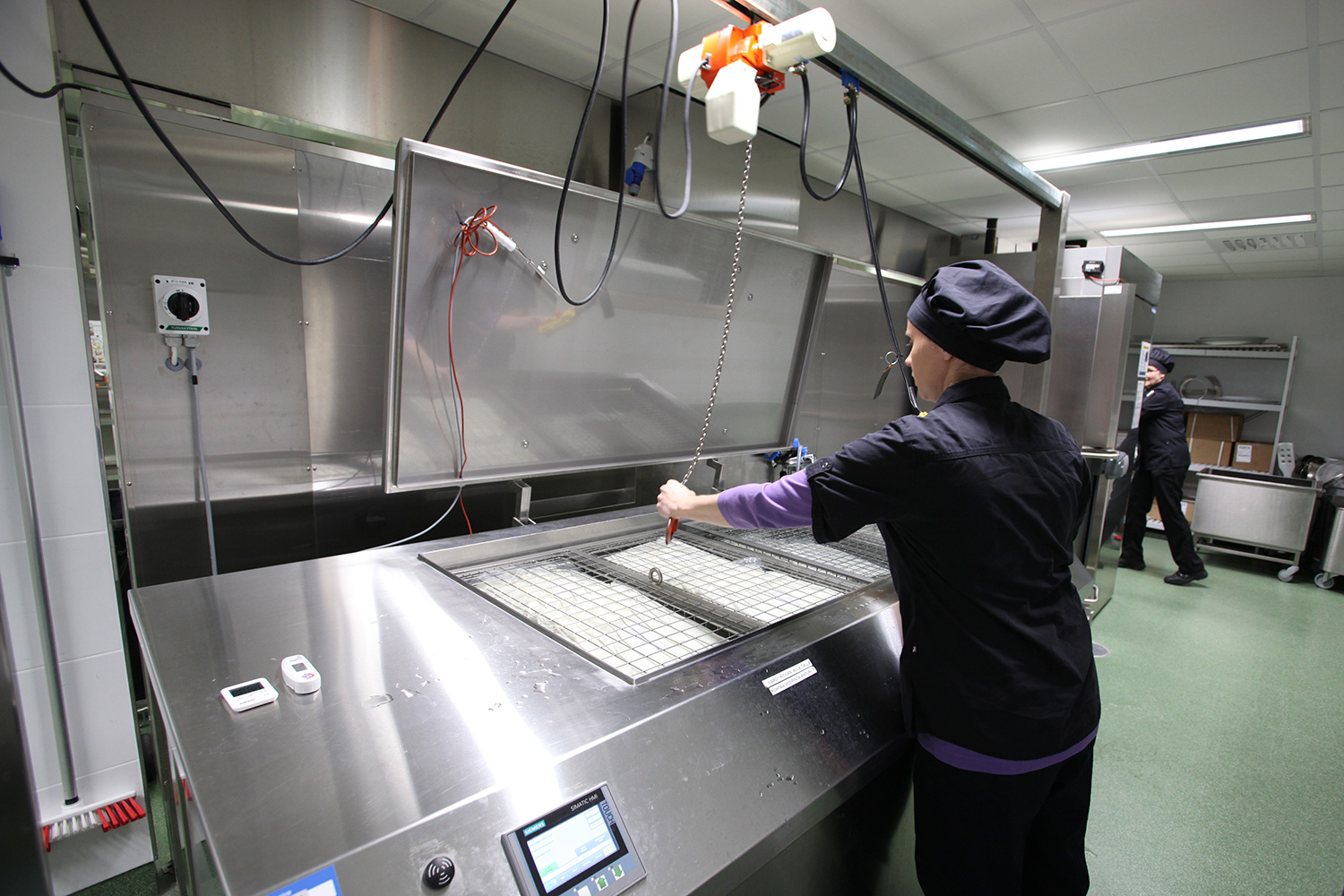

Lehtikangas multi-purpose building in City of Kajaani, is not only handsome in its appearance, but also in its functions. In the same building, there is an elementary school with 800 pupils, a 120-place children daycare center, a library, a sports hall and, of course, the modern production kitchen Lounatuuli, where more than 5,000 portions of food are prepared every day.
The design of this multi-purpose building is based on an efficient, ecological and rational spatial solution, which is divided by a free-form pass. The design language of the building is strongly curved, which enables, among other things, the deep frame and the meandering rhythm of the interior. The main designer was Martti Karsikas of Arkkitehtoimisto Karsikas Oy, and representatives of future users were also involved in designing the house.
The design focused especially on healthy indoor air, space efficiency, combining functions and its synergistic benefits, practicality and smooth property maintenance. Durability, acoustics and good indoor air were emphasized in the building’s material choices. The building’s brick cladding was already defined during the project planning phase. The goal was a long-lasting, durable and maintenance-free facade. Brick is architecturally very well suited to a public building and creates a valuable and beautiful look for the building. The surface area of the house is no less than 12,665 m2.
Meal service production according to the new operating model in the Kajaani area started in August, 2017 in the production kitchen Lounatuuli. Food for special diets is prepared in Kätönlahti production kitchen.
– During the spring of 2017, we delivered the food from Lounatuuli while it was still hot, and the current cold deliveries started at the beginning of the new semester in the fall of 2017, says Hanna Ojalehto, the service manager of the production kitchen.
During the operational trial conducted in 2016, the adequacy of the refrigeration facilities and heating equipment capacity of the service kitchens and the logistics between the production and service kitchens were investigated.
– At the beginning, kindergartens were tense about how they would have time and learn how to cook and heat food in their own service kitchen. We made written instructions and visited and guided them in the service units and also organized guidance here in Lounatuuli. Now it’s been long since we heard any feedback. Hot-fill packaging and this production have become a well-established operating method, describes Mervi Mustonen, food production manager in the City of Kajaani.
The service description clarified the roles
The roles of the kitchens became clearer when an internal service description was made for the service and production kitchens, which recorded which food products are produced in the production kitchen and delivered to the service kitchens.
The pump dispenses the desired amount per gram. On top of the pump trolley is a heat sealer that closes the bag. Batch labels are in the holder next to the screen.
Now all customers receive food prepared with the same recipe, which is a clear change from before. In service kitchens, it was possible to make, for example, porridge with water, milk or water cream. The taste could also be changed by the introduction of the heart symbol in the production kitchen, i.e. checking the amount of fat and salt.
– I have to give praise to Lounatuuli. Hanna does a great job with the chefs. They have collected customer feedback, reacted to it and developed food instructions accordingly. The chefs have also learned more about the production method and we have worked well together with Metos. The Metos people have already trained our staff several times, both in terms of equipment and in the process itself, Mustonen thanks.
5000 servings of food per day
Every day, about 5,000 lunches, breakfasts and snacks, and some dinners are prepared in the Lounatuuli production kitchen. Food supplied by Lounatuuli is eaten in 16 kindergartens and 13 schools.
– The new production method does not limit our operations in any way, we have not had to completely leave any products out of production. Of course, we have thought about how, for example, to get the soup to the customer so that it is of uniform quality. Everyone has the same amount of broth, meat, vegetables and potatoes. There are many tricks to pumping that have been learned the hard way, in cooperation with Metos, Ojalehto describes.
Changes have been made to the food instructions for different ingredients, depending on how they work in pumping. For example, it is important that the meat or the structure of the starch does not break down during pumping.
– It is not worth pumping very small amounts. For us, 80 kg is the minimum quantity, which smaller batches should not be pumped productively.
The production kitchen has the capacity to increase production, and the expansion of operations has already been tried in student restaurants of the City of Kajaani.
– There are good experiences from the trial of use. It is supported by the production control system, through which student restaurants order food products and with which the service manager manages the hot-fill products price lists.
According to Mustonen, information plays an important role in introducing a new operating method like this.
– We have held information events, attended parents’ evenings and had customers taste our good food. We have also made a video of this production, which has been shared with those who are interested. With these means, we have taken information forward.
Similar, factual answers have been given to customers’ questions, and that has also made it easier to accept the new one. The messages from administration and production have been similar.


The functional plan helped in the implementation
An operational plan was made to start the new production kitchen of Lounatuuli.
In the baskets of the cooling basin, the packages are flat and of uniform thickness, so the cooling is even and fast. Moving the baskets is done ergonomically with the cooling pool’s own lift.
– The fact that we have written this activity “open” has helped in how we have progressed in the implementation as planned and in stages. Planned production is important. While previously each chef could plan his own work and schedule, now the work is determined according to the daily production plan. With the help of daily production planning, the preparation, packaging, cooling and storage of food products is defined for each device.
– The work is professional and process-like. The cooking instructions specify the rotation speeds of the kettles, the speeds of the mixer and pumping, and the cooking times very precisely – so that we can get the quality the same in every batch, says Ojalehto.
– We have actively challenged the equipment supplier Metos, we are not satisfied with the fact that the production has been put into use, but we have wanted to question things, develop the production and get more benefit from the equipment. Together, we have developed, for example, hot-fill operations and learned both new things as the project progressed by discussing and looking for solutions.
– Metos product manager Paavo Lintunen is an inspiring person. He knows absolutely everything about the pump. He has enormous knowledge and can tell you about practical things that you understand.
Lounatuuli became a popular destination
Production kitchen Lounatuuli is a leading player in the development of food services in Finland. That’s why there has been enough interest in the new production kitchen.
– At the beginning of the operation, we did not want to receive visitors, because we wanted to refine the production processes and establish our operations. Since the fall of 2018, interested guests from different municipalities have visited our production.
According to Ojalehto, visitors are surprised by how calm the operations in the production facilities seem, even though a lot of food products are produced in quantity.
– Through the video about hot-fill production, you can get to know our production even without visiting Kajaani.
